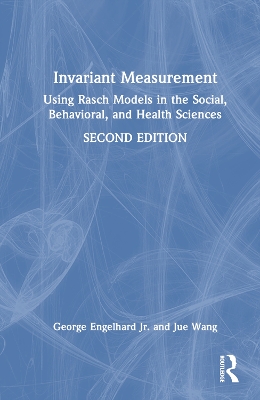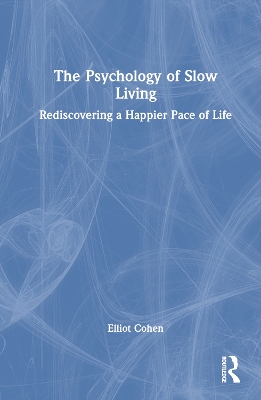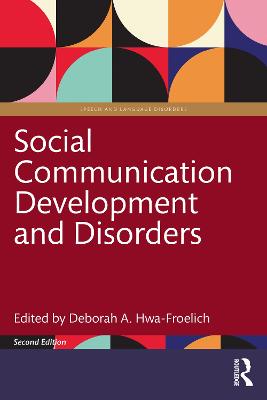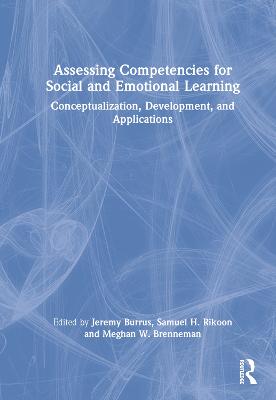Invariant Measurement
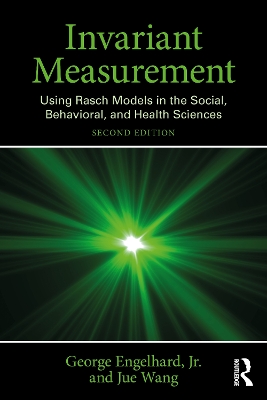 portes grátis
portes grátis
Invariant Measurement
Using Rasch Models in the Social, Behavioral, and Health Sciences
Engelhard, Jr., George; Wang, Jue
Taylor & Francis Ltd
12/2024
326
Mole
9781032603391
Pré-lançamento - envio 15 a 20 dias após a sua edição
Descrição não disponível.
Preface
Acknowledgments
About the authors
Part I: Introduction
1. Introduction and Overview
Variable maps
What are logits?
The dichotomous Rasch model
Five requirements of invariant measurement
Method and meaning of Rasch measurement
Illustrative data set: Measuring the home environment
Discussion and summary
Part II: Conceptual and Theoretical Issues
2. Invariant Measurement
What is measurement?
What is invariant measurement?
Ideal-type scales and the structure of measurement data
What are Rasch Models?
Item-invariant person measurement
Person-invariant item calibration
Discussion and Summary
3. Rasch Models
Operating characteristic functions
Dichotomous Rasch model
Polytomous Rasch Models
Partial Credit model
Rating Scale model
Many Facet Model
Discussion and Summary
4. Researcher-Constructed Measures
Building Blocks for Researcher-Constructed Measures
1. Latent variable: What is the latent variable being measured?
2. Observational Design: What is the plan for collecting structured observations or responses from persons in order to define the latent variable?
3. Scoring rules: How do we categorize the systematic observations, and then assign scores to the categories to be used as indicators of the latent variable?
4. Rasch Measurement model: How are person and item responses or observations mapped onto the latent variable?
Applications
1. Learning stimulation in the home environments of preschool children
2. Assessment in the health sciences: The five rights of safe administration of medications
Discussion and summary
5. An Historical and Comparative Perspective on Research Traditions in Measurement
What are measurement theories?
What are research traditions?
What are the three major research traditions in measurement?
Test-Score Tradition
1. The founding of classical test theory: Spearman
2. Generalizability Theory: Cronbach and his colleagues
Scaling Tradition
1. Psychophysics and the beginning of the scaling tradition: Thorndike
2. Absolute scaling and psychophysics: Thurstone
3. Item response theory: Birnbaum and Rasch
4. Non-Parametric item response theory: Guttman, Lazarsfeld, and Mokken
Structural Tradition
1. Factor analysis: Spearman and Thurstone
2. Path analysis: Wright
3. Structural equation modeling: Joreskog
4. Explanatory Item Response Models: De Boeck & Wilson
Discussion and summary
6. The Quest for Invariant Measurement within the Scaling Tradition
General issues guiding the comparisons among the scaling theories
Item-invariant person measurement
1. Parametric models: Thorndike, Thurstone, Birnbaum and Rasch
2. Non-parametric models: Guttman, Lazarsfeld and Mokken
Person-invariant item calibration
1. Parametric models: Thorndike, Thurstone, Birnbaum and Rasch
2. Non-parametric models: Guttman, Lazarsfeld and Mokken
Operating characteristic functions
1. Item response functions
2. Person response functions
Variable maps
Discussion and summary
Part III: Technical Issues
7. Methods of Estimation for the Dichotomous Rasch Model
Dichotomous Model for Rasch Measurement
Methods of Estimation
Non-iterative Estimation Methods
1. LOG Method
2. PAIR Method
3. PROX Method
Iterative Estimation Methods
1. Joint Maximum Likelihood Estimation Method
2. Marginal Maximum Likelihood Method
3. Conditional Maximum Likelihood Method
4. Bayesian Estimation Method
Item calibration: Comparison of non-iterative, MLE, and Bayesian methods
Person measurement: Illustrative data analysis of JMLE Method
Discussion and Summary
8. Model-Data Fit for the Dichotomous Rasch Model
Brief history of model-data fit for categorical data
Conceptual framework for model-data fit based on residual analyses
1. Guttman's Perspective on Model-Data Fit
2. Model-data fit statistics for dichotomous Rasch Model
Additional issues related to model-data fit
Discussion and Summary
9. Rasch Measurement Theory and Generalized Linear Mixed Models
What are generalized linear mixed models?
Specifying Explanatory Rasch Models with Generalized Linear Mixed Models
1. Dichotomous Model with no covariates
2. Linear Logistic Rasch Model with item covariates
3. Latent Regression Rasch Model with person covariates
4. Combined Covariates Rasch Model with item and person covariates
Illustrations of Explanatory Rasch Models with the Learning Stimulation Scale
1. Dichotomous Model with no covariates
2. LLRM with items classified as child or adult activities
3. LRRM with homes categorized by education level of mother
4. CCRM with both item classification and home categorization
5. Model Comparisons
Discussion and Summary
Part IV: Assessments with raters: Rater-invariant measurement
10. Rater-mediated assessments: A Conceptual framework
Rater-mediated assessments
Brief description of measurement models for raters
Rater-invariant measurement
1. Extending the requirements of invariant measurement
2. Criteria for developing and evaluating rater-mediated assessments
3. Guidelines for evaluating functioning of rating categories
The Many Facet Rasch Model
Using variable maps with rater-mediated assessments
Discussion and summary
11. Evaluating the quality of rater-mediated assessments I:
Indices of rater errors and systematic biases
Rater Errors and Systematic Biases
Illustrative data analyses
1. Rater Facet
2. Domain Facet
3. Person Facet
Rater Invariant Measurement
Discussion and Summary
12. Evaluating the quality of rater-mediated assessments II:
Direct Indices of rater accuracy
What is rater accuracy?
Rater accuracy as the underlying construct
Indices of rating accuracy
Illustrative data analyses
Relationship between rater error and accuracy
Discussion and Summary
Part V: Final Word
13. Invariant measurement: Discussion and summary
Perennial issues in assessment from the perspective of invariant measurement
Measurement Models
Assessment Development
Administration of assessments
Use of assessments
Evaluation of assessments
Final word
References
Glossary (definitions of terms)
Author Index
Subject Index
Acknowledgments
About the authors
Part I: Introduction
1. Introduction and Overview
Variable maps
What are logits?
The dichotomous Rasch model
Five requirements of invariant measurement
Method and meaning of Rasch measurement
Illustrative data set: Measuring the home environment
Discussion and summary
Part II: Conceptual and Theoretical Issues
2. Invariant Measurement
What is measurement?
What is invariant measurement?
Ideal-type scales and the structure of measurement data
What are Rasch Models?
Item-invariant person measurement
Person-invariant item calibration
Discussion and Summary
3. Rasch Models
Operating characteristic functions
Dichotomous Rasch model
Polytomous Rasch Models
Partial Credit model
Rating Scale model
Many Facet Model
Discussion and Summary
4. Researcher-Constructed Measures
Building Blocks for Researcher-Constructed Measures
1. Latent variable: What is the latent variable being measured?
2. Observational Design: What is the plan for collecting structured observations or responses from persons in order to define the latent variable?
3. Scoring rules: How do we categorize the systematic observations, and then assign scores to the categories to be used as indicators of the latent variable?
4. Rasch Measurement model: How are person and item responses or observations mapped onto the latent variable?
Applications
1. Learning stimulation in the home environments of preschool children
2. Assessment in the health sciences: The five rights of safe administration of medications
Discussion and summary
5. An Historical and Comparative Perspective on Research Traditions in Measurement
What are measurement theories?
What are research traditions?
What are the three major research traditions in measurement?
Test-Score Tradition
1. The founding of classical test theory: Spearman
2. Generalizability Theory: Cronbach and his colleagues
Scaling Tradition
1. Psychophysics and the beginning of the scaling tradition: Thorndike
2. Absolute scaling and psychophysics: Thurstone
3. Item response theory: Birnbaum and Rasch
4. Non-Parametric item response theory: Guttman, Lazarsfeld, and Mokken
Structural Tradition
1. Factor analysis: Spearman and Thurstone
2. Path analysis: Wright
3. Structural equation modeling: Joreskog
4. Explanatory Item Response Models: De Boeck & Wilson
Discussion and summary
6. The Quest for Invariant Measurement within the Scaling Tradition
General issues guiding the comparisons among the scaling theories
Item-invariant person measurement
1. Parametric models: Thorndike, Thurstone, Birnbaum and Rasch
2. Non-parametric models: Guttman, Lazarsfeld and Mokken
Person-invariant item calibration
1. Parametric models: Thorndike, Thurstone, Birnbaum and Rasch
2. Non-parametric models: Guttman, Lazarsfeld and Mokken
Operating characteristic functions
1. Item response functions
2. Person response functions
Variable maps
Discussion and summary
Part III: Technical Issues
7. Methods of Estimation for the Dichotomous Rasch Model
Dichotomous Model for Rasch Measurement
Methods of Estimation
Non-iterative Estimation Methods
1. LOG Method
2. PAIR Method
3. PROX Method
Iterative Estimation Methods
1. Joint Maximum Likelihood Estimation Method
2. Marginal Maximum Likelihood Method
3. Conditional Maximum Likelihood Method
4. Bayesian Estimation Method
Item calibration: Comparison of non-iterative, MLE, and Bayesian methods
Person measurement: Illustrative data analysis of JMLE Method
Discussion and Summary
8. Model-Data Fit for the Dichotomous Rasch Model
Brief history of model-data fit for categorical data
Conceptual framework for model-data fit based on residual analyses
1. Guttman's Perspective on Model-Data Fit
2. Model-data fit statistics for dichotomous Rasch Model
Additional issues related to model-data fit
Discussion and Summary
9. Rasch Measurement Theory and Generalized Linear Mixed Models
What are generalized linear mixed models?
Specifying Explanatory Rasch Models with Generalized Linear Mixed Models
1. Dichotomous Model with no covariates
2. Linear Logistic Rasch Model with item covariates
3. Latent Regression Rasch Model with person covariates
4. Combined Covariates Rasch Model with item and person covariates
Illustrations of Explanatory Rasch Models with the Learning Stimulation Scale
1. Dichotomous Model with no covariates
2. LLRM with items classified as child or adult activities
3. LRRM with homes categorized by education level of mother
4. CCRM with both item classification and home categorization
5. Model Comparisons
Discussion and Summary
Part IV: Assessments with raters: Rater-invariant measurement
10. Rater-mediated assessments: A Conceptual framework
Rater-mediated assessments
Brief description of measurement models for raters
Rater-invariant measurement
1. Extending the requirements of invariant measurement
2. Criteria for developing and evaluating rater-mediated assessments
3. Guidelines for evaluating functioning of rating categories
The Many Facet Rasch Model
Using variable maps with rater-mediated assessments
Discussion and summary
11. Evaluating the quality of rater-mediated assessments I:
Indices of rater errors and systematic biases
Rater Errors and Systematic Biases
Illustrative data analyses
1. Rater Facet
2. Domain Facet
3. Person Facet
Rater Invariant Measurement
Discussion and Summary
12. Evaluating the quality of rater-mediated assessments II:
Direct Indices of rater accuracy
What is rater accuracy?
Rater accuracy as the underlying construct
Indices of rating accuracy
Illustrative data analyses
Relationship between rater error and accuracy
Discussion and Summary
Part V: Final Word
13. Invariant measurement: Discussion and summary
Perennial issues in assessment from the perspective of invariant measurement
Measurement Models
Assessment Development
Administration of assessments
Use of assessments
Evaluation of assessments
Final word
References
Glossary (definitions of terms)
Author Index
Subject Index
Este título pertence ao(s) assunto(s) indicados(s). Para ver outros títulos clique no assunto desejado.
rasch;model;latent;variable;dichotomous;item;response;theory;functions;person
Preface
Acknowledgments
About the authors
Part I: Introduction
1. Introduction and Overview
Variable maps
What are logits?
The dichotomous Rasch model
Five requirements of invariant measurement
Method and meaning of Rasch measurement
Illustrative data set: Measuring the home environment
Discussion and summary
Part II: Conceptual and Theoretical Issues
2. Invariant Measurement
What is measurement?
What is invariant measurement?
Ideal-type scales and the structure of measurement data
What are Rasch Models?
Item-invariant person measurement
Person-invariant item calibration
Discussion and Summary
3. Rasch Models
Operating characteristic functions
Dichotomous Rasch model
Polytomous Rasch Models
Partial Credit model
Rating Scale model
Many Facet Model
Discussion and Summary
4. Researcher-Constructed Measures
Building Blocks for Researcher-Constructed Measures
1. Latent variable: What is the latent variable being measured?
2. Observational Design: What is the plan for collecting structured observations or responses from persons in order to define the latent variable?
3. Scoring rules: How do we categorize the systematic observations, and then assign scores to the categories to be used as indicators of the latent variable?
4. Rasch Measurement model: How are person and item responses or observations mapped onto the latent variable?
Applications
1. Learning stimulation in the home environments of preschool children
2. Assessment in the health sciences: The five rights of safe administration of medications
Discussion and summary
5. An Historical and Comparative Perspective on Research Traditions in Measurement
What are measurement theories?
What are research traditions?
What are the three major research traditions in measurement?
Test-Score Tradition
1. The founding of classical test theory: Spearman
2. Generalizability Theory: Cronbach and his colleagues
Scaling Tradition
1. Psychophysics and the beginning of the scaling tradition: Thorndike
2. Absolute scaling and psychophysics: Thurstone
3. Item response theory: Birnbaum and Rasch
4. Non-Parametric item response theory: Guttman, Lazarsfeld, and Mokken
Structural Tradition
1. Factor analysis: Spearman and Thurstone
2. Path analysis: Wright
3. Structural equation modeling: Joreskog
4. Explanatory Item Response Models: De Boeck & Wilson
Discussion and summary
6. The Quest for Invariant Measurement within the Scaling Tradition
General issues guiding the comparisons among the scaling theories
Item-invariant person measurement
1. Parametric models: Thorndike, Thurstone, Birnbaum and Rasch
2. Non-parametric models: Guttman, Lazarsfeld and Mokken
Person-invariant item calibration
1. Parametric models: Thorndike, Thurstone, Birnbaum and Rasch
2. Non-parametric models: Guttman, Lazarsfeld and Mokken
Operating characteristic functions
1. Item response functions
2. Person response functions
Variable maps
Discussion and summary
Part III: Technical Issues
7. Methods of Estimation for the Dichotomous Rasch Model
Dichotomous Model for Rasch Measurement
Methods of Estimation
Non-iterative Estimation Methods
1. LOG Method
2. PAIR Method
3. PROX Method
Iterative Estimation Methods
1. Joint Maximum Likelihood Estimation Method
2. Marginal Maximum Likelihood Method
3. Conditional Maximum Likelihood Method
4. Bayesian Estimation Method
Item calibration: Comparison of non-iterative, MLE, and Bayesian methods
Person measurement: Illustrative data analysis of JMLE Method
Discussion and Summary
8. Model-Data Fit for the Dichotomous Rasch Model
Brief history of model-data fit for categorical data
Conceptual framework for model-data fit based on residual analyses
1. Guttman's Perspective on Model-Data Fit
2. Model-data fit statistics for dichotomous Rasch Model
Additional issues related to model-data fit
Discussion and Summary
9. Rasch Measurement Theory and Generalized Linear Mixed Models
What are generalized linear mixed models?
Specifying Explanatory Rasch Models with Generalized Linear Mixed Models
1. Dichotomous Model with no covariates
2. Linear Logistic Rasch Model with item covariates
3. Latent Regression Rasch Model with person covariates
4. Combined Covariates Rasch Model with item and person covariates
Illustrations of Explanatory Rasch Models with the Learning Stimulation Scale
1. Dichotomous Model with no covariates
2. LLRM with items classified as child or adult activities
3. LRRM with homes categorized by education level of mother
4. CCRM with both item classification and home categorization
5. Model Comparisons
Discussion and Summary
Part IV: Assessments with raters: Rater-invariant measurement
10. Rater-mediated assessments: A Conceptual framework
Rater-mediated assessments
Brief description of measurement models for raters
Rater-invariant measurement
1. Extending the requirements of invariant measurement
2. Criteria for developing and evaluating rater-mediated assessments
3. Guidelines for evaluating functioning of rating categories
The Many Facet Rasch Model
Using variable maps with rater-mediated assessments
Discussion and summary
11. Evaluating the quality of rater-mediated assessments I:
Indices of rater errors and systematic biases
Rater Errors and Systematic Biases
Illustrative data analyses
1. Rater Facet
2. Domain Facet
3. Person Facet
Rater Invariant Measurement
Discussion and Summary
12. Evaluating the quality of rater-mediated assessments II:
Direct Indices of rater accuracy
What is rater accuracy?
Rater accuracy as the underlying construct
Indices of rating accuracy
Illustrative data analyses
Relationship between rater error and accuracy
Discussion and Summary
Part V: Final Word
13. Invariant measurement: Discussion and summary
Perennial issues in assessment from the perspective of invariant measurement
Measurement Models
Assessment Development
Administration of assessments
Use of assessments
Evaluation of assessments
Final word
References
Glossary (definitions of terms)
Author Index
Subject Index
Acknowledgments
About the authors
Part I: Introduction
1. Introduction and Overview
Variable maps
What are logits?
The dichotomous Rasch model
Five requirements of invariant measurement
Method and meaning of Rasch measurement
Illustrative data set: Measuring the home environment
Discussion and summary
Part II: Conceptual and Theoretical Issues
2. Invariant Measurement
What is measurement?
What is invariant measurement?
Ideal-type scales and the structure of measurement data
What are Rasch Models?
Item-invariant person measurement
Person-invariant item calibration
Discussion and Summary
3. Rasch Models
Operating characteristic functions
Dichotomous Rasch model
Polytomous Rasch Models
Partial Credit model
Rating Scale model
Many Facet Model
Discussion and Summary
4. Researcher-Constructed Measures
Building Blocks for Researcher-Constructed Measures
1. Latent variable: What is the latent variable being measured?
2. Observational Design: What is the plan for collecting structured observations or responses from persons in order to define the latent variable?
3. Scoring rules: How do we categorize the systematic observations, and then assign scores to the categories to be used as indicators of the latent variable?
4. Rasch Measurement model: How are person and item responses or observations mapped onto the latent variable?
Applications
1. Learning stimulation in the home environments of preschool children
2. Assessment in the health sciences: The five rights of safe administration of medications
Discussion and summary
5. An Historical and Comparative Perspective on Research Traditions in Measurement
What are measurement theories?
What are research traditions?
What are the three major research traditions in measurement?
Test-Score Tradition
1. The founding of classical test theory: Spearman
2. Generalizability Theory: Cronbach and his colleagues
Scaling Tradition
1. Psychophysics and the beginning of the scaling tradition: Thorndike
2. Absolute scaling and psychophysics: Thurstone
3. Item response theory: Birnbaum and Rasch
4. Non-Parametric item response theory: Guttman, Lazarsfeld, and Mokken
Structural Tradition
1. Factor analysis: Spearman and Thurstone
2. Path analysis: Wright
3. Structural equation modeling: Joreskog
4. Explanatory Item Response Models: De Boeck & Wilson
Discussion and summary
6. The Quest for Invariant Measurement within the Scaling Tradition
General issues guiding the comparisons among the scaling theories
Item-invariant person measurement
1. Parametric models: Thorndike, Thurstone, Birnbaum and Rasch
2. Non-parametric models: Guttman, Lazarsfeld and Mokken
Person-invariant item calibration
1. Parametric models: Thorndike, Thurstone, Birnbaum and Rasch
2. Non-parametric models: Guttman, Lazarsfeld and Mokken
Operating characteristic functions
1. Item response functions
2. Person response functions
Variable maps
Discussion and summary
Part III: Technical Issues
7. Methods of Estimation for the Dichotomous Rasch Model
Dichotomous Model for Rasch Measurement
Methods of Estimation
Non-iterative Estimation Methods
1. LOG Method
2. PAIR Method
3. PROX Method
Iterative Estimation Methods
1. Joint Maximum Likelihood Estimation Method
2. Marginal Maximum Likelihood Method
3. Conditional Maximum Likelihood Method
4. Bayesian Estimation Method
Item calibration: Comparison of non-iterative, MLE, and Bayesian methods
Person measurement: Illustrative data analysis of JMLE Method
Discussion and Summary
8. Model-Data Fit for the Dichotomous Rasch Model
Brief history of model-data fit for categorical data
Conceptual framework for model-data fit based on residual analyses
1. Guttman's Perspective on Model-Data Fit
2. Model-data fit statistics for dichotomous Rasch Model
Additional issues related to model-data fit
Discussion and Summary
9. Rasch Measurement Theory and Generalized Linear Mixed Models
What are generalized linear mixed models?
Specifying Explanatory Rasch Models with Generalized Linear Mixed Models
1. Dichotomous Model with no covariates
2. Linear Logistic Rasch Model with item covariates
3. Latent Regression Rasch Model with person covariates
4. Combined Covariates Rasch Model with item and person covariates
Illustrations of Explanatory Rasch Models with the Learning Stimulation Scale
1. Dichotomous Model with no covariates
2. LLRM with items classified as child or adult activities
3. LRRM with homes categorized by education level of mother
4. CCRM with both item classification and home categorization
5. Model Comparisons
Discussion and Summary
Part IV: Assessments with raters: Rater-invariant measurement
10. Rater-mediated assessments: A Conceptual framework
Rater-mediated assessments
Brief description of measurement models for raters
Rater-invariant measurement
1. Extending the requirements of invariant measurement
2. Criteria for developing and evaluating rater-mediated assessments
3. Guidelines for evaluating functioning of rating categories
The Many Facet Rasch Model
Using variable maps with rater-mediated assessments
Discussion and summary
11. Evaluating the quality of rater-mediated assessments I:
Indices of rater errors and systematic biases
Rater Errors and Systematic Biases
Illustrative data analyses
1. Rater Facet
2. Domain Facet
3. Person Facet
Rater Invariant Measurement
Discussion and Summary
12. Evaluating the quality of rater-mediated assessments II:
Direct Indices of rater accuracy
What is rater accuracy?
Rater accuracy as the underlying construct
Indices of rating accuracy
Illustrative data analyses
Relationship between rater error and accuracy
Discussion and Summary
Part V: Final Word
13. Invariant measurement: Discussion and summary
Perennial issues in assessment from the perspective of invariant measurement
Measurement Models
Assessment Development
Administration of assessments
Use of assessments
Evaluation of assessments
Final word
References
Glossary (definitions of terms)
Author Index
Subject Index
Este título pertence ao(s) assunto(s) indicados(s). Para ver outros títulos clique no assunto desejado.

